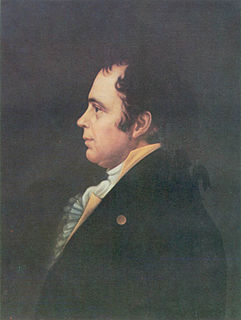External links
| This Maryland-related article is a stub. You can help Wikipedia by expanding it. |
The Fort McHenry Guard is a dynamic volunteer unit that serves Fort McHenry National Monument and Historic Shrine.
Dedicated men and women of all ages from across Maryland, Guard members dress in period clothes from the War of 1812 and help interpret the Battle of Baltimore and the role of Fort McHenry for the many visitors who come to the park annually. Beyond the park, the Guard assists in other War of 1812 events and reenactments at places such as Riversdale and Havre de Grace.
Among their members is former Governor of Maryland, Martin O'Malley who was named their honorary colonel in 2003.
In 2005, the Guard was presented the George B. Hartzog award for serving as the National Park Service's best volunteer unit.
| This Maryland-related article is a stub. You can help Wikipedia by expanding it. |

Fort McHenry is a historical American coastal pentagonal bastion fort located in the Locust Point neighborhood of Baltimore, Maryland. It is best known for its role in the War of 1812, when it successfully defended Baltimore Harbor from an attack by the British navy from the Chesapeake Bay on September 13–14, 1814. It was first built in 1798 and was used continuously by the U.S. armed forces through World War I and by the Coast Guard in World War II. It was designated a national park in 1925, and in 1939 was redesignated a "National Monument and Historic Shrine".

Fort Henry National Historic Site is located in Kingston, Ontario, Canada on Point Henry, a strategic, elevated point near the mouth of the Cataraqui River where it flows into the St. Lawrence River at the east end of Lake Ontario. The fort and the point on which the fort was built were named after Henry Hamilton, former Lieutenant-Governor of the Province of Quebec.

James McHenry was a Scotch-Irish American military surgeon and statesman. McHenry was a signer of the United States Constitution from Maryland, initiated the recommendation for congress to form the Navy, and the eponym of Fort McHenry. He was a delegate to the Continental Congress from Maryland, and the third United States Secretary of War (1796–1800), under the first and second presidents, George Washington and John Adams. He married his wife, Peggy Caldwell, on January 8, 1784.

The Battle of Baltimore was a sea/land battle fought between British invaders and American defenders in the War of 1812. American forces repulsed sea and land invasions off the busy port city of Baltimore, Maryland, and killed the commander of the invading British forces. The British and Americans first met at the Battle of North Point. Though the Americans retreated, the battle was a successful delaying action that inflicted heavy casualties on the British, halted their advance and, consequently, allowed the defenders at Baltimore to properly prepare for an attack.

The Battle of North Point was an engagement in the War of 1812, fought on September 12, 1814, between Brigadier General John Stricker's Third Brigade of the Maryland State Militia and a British landing force, composed of units from the British Army, Royal Navy seamen, Colonial Marines, Royal Marines, and led by Major General Robert Ross and Rear Admiral George Cockburn. The events and result of the engagement, a part of the larger Battle of Baltimore, saw the U.S. forces retreating after having inflicted heavy casualties on the British.
Defenders Day is a longtime legal holiday on September 12th, in the U.S. state of Maryland, in the City of Baltimore and surrounding Baltimore County. It commemorates the successful defense of the city of Baltimore on September 12th-13th-14th, 1814 from an invading British force during the War of 1812, an event which led to the writing of the words of a poem, which when set to music a few days later, became known as "The Star-Spangled Banner", which in 1931 was designated as the national anthem of the United States.
The 201st Field Artillery Regiment was organized in 1735, nearly 100 years following the National Guard's 1636 organization in Massachusetts. Based in Fairmont, West Virginia, it is one of several National Guard units with colonial roots and campaign credit for the War of 1812, and currently perpetuates the Virginia elements of the Maryland and Virginia Rifle Regiment of the American Revolution.

The 7th Regiment of the New York Militia, aka the "Silk Stocking" regiment, was an infantry regiment in the Union Army during the American Civil War. Also known as the "Blue-Bloods" due to the disproportionate number of its members who were part of New York City's social elite, the 7th Militia was a pre-war New York Militia unit that was mustered into federal service for the Civil War.

The Fort York Guard is an historical animation unit based at Fort York in downtown Toronto. The Guard recreates the Canadian Regiment of Fencible Infantry, stationed at the fort in 1815.

Brigadier General John Stricker (1758–1825) was a Maryland state militia officer who fought in both the American Revolutionary War in the First Maryland Regiment of the famous "Maryland Line" of the Continental Army and in the War of 1812. He commanded the Third Brigade of the Maryland state militia in the Battle of North Point on Monday, September 12, 1814, which formed a part of the larger Battle of Baltimore, along with the subsequent British naval bombardment of Fort McHenry on September 13-14th, and was a turning point in the later months of the War of 1812 and to the peace negotiators across the Atlantic Ocean for the Treaty of Ghent, in the city of Ghent then in the Austrian Netherlands,, which finally arrived at a peace treaty on Christmas Eve of December 1814, of which news finally reached America in February 1815.

The Newport Artillery Company of Newport, Rhode Island was chartered in 1741 by the Rhode Island General Assembly during the reign of King George II of Great Britain. It is the oldest military unit in the United States operating under its original charter, and the company maintains a museum in its historic armory. The Company has served in wars ranging from the French and Indian War to the First World War. Individual members of the Company have served in every war fought by the United States.

The Washington Blues were a company of Maryland Volunteers which saw action during the Battle of Bladensburg and the Battle of North Point, during the War of 1812.
The 160th Ohio Volunteer Infantry Regiment was an infantry regiment in the Union Army during the American Civil War.

The 175th Infantry Regiment is an infantry regiment of the Maryland Army National Guard. It is one of several National Guard units with colonial roots and campaign credit for the War of 1812.
Twenty-four current units of the Army National Guard perpetuate the lineages of militia units mustered into federal service during the War of 1812. Militia units from nine states that were part of the Union by the end of the War of 1812, plus the District of Columbia, are the predecessors of eighteen units that currently exist in the Army National Guard. Two of the four units derived from Virginia militias are in the West Virginia National Guard; at the time of the War of 1812, West Virginia was still part of Virginia. Only two current units, the 155th Infantry, a component of the Mississippi National Guard derived from militia units organized in the Mississippi Territory and the 130th Infantry, a component of the Illinois National Guard derived from militia units formed in the Illinois Territory, are from states or territories west of the Appalachians. Unfortunately, no militia units from the states of Kentucky, Louisiana, Ohio or Tennessee, or from the Indiana, Michigan, Missouri or Louisiana Territories, where militia units played a major role in the fighting, have survived as units in the modern Army National Guard.
Nathaniel Gray Smith Hart, often Nathaniel G. S. Hart, was a Lexington, Kentucky lawyer and businessman, who served with the state's volunteer militia during the War of 1812. As Captain of the Lexington Light Infantry from Kentucky, Hart and many of his men were killed in the River Raisin Massacre of January 23, 1813, after being taken prisoner the day before following the Battle of Frenchtown in Michigan Territory.

The Maine State Guard was the state defense force of the state of Maine during World War I, World War II, and the Vietnam War. As a state defense force, the State Guard served as a stateside replacement for the Maine National Guard when the National Guard was federalized. Like the National Guard, the State Guard was a reserve military force composed of members who held full-time civilian jobs and periodically met for drills, unless called into active service by the governor. However, unlike the National Guard, as a state defense force, the Maine State Guard was solely a state military force, which was immune from federalization and could not be deployed outside the State of Maine.

Born Frederick Hall who used the alias William Williams as a runaway African American slave who enlisted as a private in the U.S. Army during the War of 1812 and who died from a mortal wound while defending Fort McHenry from the British naval bombardment in 1814.

Riverside Park is a nearly 17-acre (6.9 ha) public park located in the historic Riverside neighborhood in Baltimore, Maryland.
The 118th Field Artillery Regiment is a field artillery regiment of the Georgia Army National Guard. The regiment's 1st Battalion is the cannon battalion assigned to the 48th Infantry Brigade Combat Team. It is one of several National Guard units with colonial roots and campaign credit for the War of 1812.